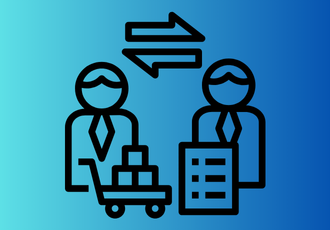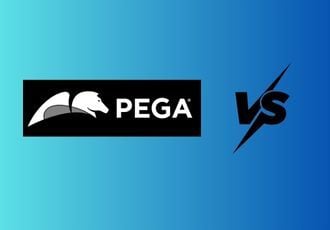Before we go into the details of how the benefits of procurement automation stand out, we should highlight what made it essential for enterprises in the first place.
Manual procurement often drains both time and budget. Take, for example, how tasks like chasing approvals, fixing data entry errors, and matching invoices sidetrack teams from strategic work.
According to IFOL’s 2025 Accounts Payable Automation Trends report, 63% of AP teams now spend over 10 hours a week processing invoices, up from 52% in 2024, proving that inefficiencies are compounding without automation.
Most importantly, as we veer towards Industry 4.0 and digital transformation is in full swing across industries, procurement teams are under immense pressure to move beyond manual processes.
Therefore, without a doubt, the benefits of procurement process automation will take center stage, not just for efficiency, but for clear oversight and data-driven decisions.
 Stats from the recent FOL’s 2025 Accounts Payable Automation Trends report
Stats from the recent FOL’s 2025 Accounts Payable Automation Trends report
In this detailed guide, we’ll break down the core benefits of automating procurement and how an enterprise-friendly, AI-powered process automation platform like FlowForma helps you stay ahead.
What is Procurement Automation?
Procurement automation means using specialized digital process automation software to simplify, standardize, and accelerate purchasing activities.
Instead of relying on spreadsheets or emails to manage supplier communication or waiting on approvals and invoices, teams use digital tools to handle everything from purchase requisitions to contract management.
These systems should also integrate with existing enterprise resource planning (ERP) tools and procurement platforms, creating a connected workflow automation environment. That means fewer delays from manual handoffs and better accuracy in order tracking, budget management, and compliance documentation.
This way, procurement automation replaces repetitive tasks with predefined rules and intelligent workflows. This results in shorter procurement cycles and reduced admin burden.
What Are the Challenges in the Manual Procurement Process?
 7 challenges in the manual procurement process
7 challenges in the manual procurement process
As businesses grow, inefficiencies of manual procurement become harder to ignore:
1. Time-consuming and inefficient
Every purchase requires multiple touchpoints—paperwork, manual data entry, cross-team approvals—all of which slow down procurement cycles. Sometimes, even routine requests can take days to process.
2. High risk of human error
Needless to say, manual processes increase the likelihood of mistakes. A small error in supplier details or invoice totals can delay payments, strain relationships, or trigger compliance issues. In decentralized teams, missed approvals are quite common.
3. Limited visibility and fragmented data
As real-time tracking or centralized reporting are not present, procurement teams regularly struggle to monitor order statuses, analyze spend, or track supplier performance. Also, budget adherence becomes guesswork.
4. Inconsistent processes across departments
Lack of standardization means inconsistent workflows. One team might follow strict review procedures; another might bypass them entirely. From an operational standpoint, these disparities cause delays and complicate audits.
5. Poor data insights and compliance challenges
When procurement data is scattered across spreadsheets and inboxes, it becomes difficult to identify trends, enforce policy compliance, or generate accurate reports for finance and leadership.
6. Supplier management becomes reactive
In manual systems, contract tracking, supplier onboarding, and performance reviews are often ad hoc. This reactive approach makes it more challenging to establish strong, collaborative supplier relationships.
7. Higher operational costs
Manual processing incurs additional overhead, including increased administrative hours, more error correction, and budget leaks resulting from missed controls.
12 Benefits of Automating the Procurement Process
 The 12 benefits of automating the procurement process
The 12 benefits of automating the procurement process
The benefits of procurement automation extend far beyond efficiency gains, transforming how organizations manage their purchasing ecosystem. Here's how:
1. Increased efficiency across procurement cycles
To begin with, procurement automation eliminates slow, repetitive tasks like manual data entry, invoice matching, and chasing approvals. With workflows that automatically route purchase requests or flag mismatches, procurement cycles become significantly faster.
According to a Deloitte report, automation can reduce procurement cycle times by up to 50%.
For example, at the Utah Department of Health and Human Services (DHHS), FlowForma’s platform replaced legacy tools like InfoPath and SharePoint Designer to modernize a complex procurement environment supporting over 6,000 employees.
The team automated key workflows across purchasing, contracts, grants, travel, risk assessments, and legislative reporting. This resulted in greater efficiency, cleaner data, and, most importantly, seamless audits.
Unlike fragmented solutions, FlowForma's all-in-one platform handles forms, workflows, analytics, and document generation with transparent pricing and no hidden costs.
Watch this webinar featuring DHHS, where their team walks through their automation journey firsthand.
2. Cost savings at scale
Manual procurement processes often lead to rework, delays, and unnecessary overhead. According to Ardent Partners’ 2024 report, 35% of Cost Procurement Officers (CPOs) report higher savings as a direct benefit of procurement technology.
Coinford implemented FlowForma Process Automation across multiple departments to digitize purchase order requests and other site processes. Notably, they introduced a Surplus Materials workflow that enabled different sites to reuse excess materials rather than make redundant purchases.
According to the company’s IT Director, Shaun O’Donnell, this initiative alone had the potential to save hundreds of thousands of pounds by reducing unnecessary procurement spending.
Additionally, managers reported saving between 15% to 20% of their time by using tablets with FlowForma while moving around sites, freeing them from repetitive paperwork and allowing more focus on high-value tasks. This also demonstrates how procurement process automation delivers compound benefits: direct cost savings plus increased productivity. To note, FlowForma's transparent, process-based pricing model ensures costs remain predictable as you scale.
 Coinford saved hours of admin time and improved audit readiness, highlighting real procurement benefits with FlowForma.
Coinford saved hours of admin time and improved audit readiness, highlighting real procurement benefits with FlowForma.
3. Improved accuracy and fewer mistakes
Manual procurement processes rely on paper forms, spreadsheets, and email trails, each a frequent source of errors and delays. Among the most practical benefits of procurement automation is its ability to eliminate inconsistencies through structured data entry, real-time validations, and standardized workflows.
At PJ Hegarty, FlowForma helped digitize key workflows across safety, requisitions, and procurement. As part of their early rollout, they reported a 25% reduction in administrative time for safety observations and a 40% increase in data accuracy from mobile form entries.
FlowForma's AI Copilot further ensures accuracy by automatically structuring processes based on uploaded procurement policies or plain-text descriptions, which means a lower scope of manual workflow design errors. For enterprises, the accuracy improvements compound over time: cleaner data enables better analytics, which drives smarter procurement decisions.
 PJ Hegarty’s data accuracy jumped by 45%—a measurable outcome of the benefits of procurement automation in action through FlowForma.
PJ Hegarty’s data accuracy jumped by 45%—a measurable outcome of the benefits of procurement automation in action through FlowForma.
4. Stronger supplier relationships
Supplier trust is built on consistency—timely communication, structured processes, and prompt payments all contribute to stronger partnerships.
In fact, 27% of organizations say supplier relationships are being damaged due to delays or issues in the accounts payable process, according to the 2025 IFOL Accounts Payable Automation Trends report.
Procurement automation helps reverse this. With real-time updates, centralized documentation, and streamlined onboarding, vendors get faster responses and clearer expectations.
The 2023 Deloitte Global CPO Survey highlights that supplier collaboration is now the top strategic priority for procurement leaders, surpassing even digital transformation. This signals a decisive shift toward deeper, long-term partnerships.
Here, Flowforma’s automated supplier onboarding workflows standardize document collection, approval routing, and communication touchpoints, ensuring suppliers experience professional, consistent interactions.
Explore FlowForma's supplier onboarding automation demo to see how AI-powered workflows deliver on their promises.
5. Enhanced compliance and audit readiness
Manual procurement processes introduce risk, not just operationally, but legally. Without proper controls, organizations can unintentionally violate procurement laws, which vary by region but carry serious penalties if overlooked.
Automation offers a reliable safeguard, especially in regulated environments like the UK and the US.
In the UK, public sector procurement must comply with the Public Contracts Regulations 2015, which align with EU principles of transparency, equal treatment, and competition. These regulations mandate:
- Competitive tendering above £213,477 for goods and services
- Clear audit trails for procurement decisions
- Publication of contract notices on Find a Tender (FTS)
- Adherence to timeframes and process structures
Failing to meet these obligations can lead to contract challenges, fines, or public scrutiny. A procurement automation software like FlowForma ensures that approval thresholds, tender rules, and audit logs are all built into the process.
Workflows can be customized to meet FTS publication deadlines or mandate internal review before contract award, reducing manual oversight risk.
In the US, federal procurement is governed by the Federal Acquisition Regulation (FAR). It outlines how government agencies must acquire goods and services, including:
-
Competitive bidding processes
-
Contract clauses that comply with federal law
-
Conflict-of-interest disclosures
-
Mandatory reporting and recordkeeping
States and municipalities often have their own additional procurement statutes. Without automation, tracking compliance with FAR clauses, maintaining documentation, or ensuring timely reporting is a significant burden.
FlowForma simplifies these requirements through customizable, rule-based workflows.
A great example of FlowForma in action is shown in this demo, where FlowForma Copilot builds a complete government procurement workflow from a simple text prompt or uploaded policy document. The Copilot automatically structures the process into steps, questions, and rules, capturing requisitions, approvals, and vendor selections in a single flow.
You can customize each section, define conditions, and test the process in real time, all without writing code. The result is a structured, compliant procurement process ready to deploy in minutes.
The Flowforma AI Copilot provides guidance for building a government procurement process
6. Greater visibility and real-time data
Want to know where a purchase request is stuck, or how much your department has spent on software vendors this quarter?
One of the key benefits of procurement automation is real-time visibility into every transaction, approval, and spend category. Teams can instantly track status, identify bottlenecks, and analyze vendor performance, all from a centralized dashboard.
This kind of access is essential. According to McKinsey, fewer than 20% of organizations currently utilize the procurement data they already have, primarily because it’s scattered and unstructured.
Automation completely changes that. It transforms raw data into actionable insights that help teams make informed, confident decisions. In this regard, FlowForma's unified dashboard provides comprehensive visibility into every procurement transaction, approval status, vendor interaction, and spend category.

Caption: FlowForma dashboard displays data, featuring site-specific breakdowns
Unlike point solutions that require expensive integrations and custom reporting tools, this all-in-one platform centralizes procurement data automatically.
7. Shorter time-to-market for key initiatives
Procurement delays often stall larger projects, be it onboarding a new tool, launching a campaign, or initiating a facility upgrade. Automation ensures that sourcing, vendor approvals, and contract sign-offs move quickly, accelerating project timelines.
Downer's Transport & Infrastructure team utilized FlowForma to digitize key procurement processes, including an Automated Purchase Order flow, which successfully digitized over 4,500 purchase order requests. This was instrumental in enabling quicker execution of field operations and project needs, significantly reducing bottlenecks caused by manual approvals.
With mobile-enabled workflows, procurement teams could approve and act on requests in real-time, supporting faster execution of infrastructure projects.

Downer’s team saved over 3,350 hours by automating procurement requests—proof of procurement process automation at scale.
To note, FlowForma's 4x faster implementation compared to traditional low-code platforms means procurement automation goes live in weeks, delivering immediate time-to-value.
8. Smarter decision making through analytics
Procurement decisions improve measurably when teams have access to structured, real-time data. Procurement teams can track vendor performance, pricing trends, and approval cycles, and make decisions based on clean, structured data.
At Nipro Europe, procurement workflows were inconsistent across 26 sites, making it difficult to compare performance or identify delays. With FlowForma, the organization implemented standardized digital processes and dashboards to track KPIs like timing, frequency, and usage.
This gave procurement leads visibility into what was working and what wasn’t without relying on external tools or consultants.
Nipro Europe highlights the benefits of procurement automation, noting ease of use and empowered process ownership.
9. Scalability without overhead
Manual processes don't scale well; every growth spurt demands more staff. Automated systems, on the other hand, can handle hundreds of workflows and thousands of transactions without adding new hires.
A UK-based oil refinery overcame this with FlowForma, deploying it across procurement, finance, civil, and safety departments without expanding headcount. By training 12 internal superusers to manage and build workflows, the company scaled automation organically—no IT bottlenecks, no extra hires.
Procurement teams could digitize requests, approvals, and supplier communication, all while maintaining governance through a centralized approval board.
10. Better strategic sourcing
With procurement data centralized, it's easier to evaluate suppliers based on price, delivery times, compliance scores, and more. This leads to smarter sourcing decisions and stronger negotiations.
Organizations that fully realize the benefits of procurement automation often find that their procurement teams become strategic business partners rather than just order processors.
A global food manufacturer used FlowForma to automate 11 key workflows, including price approvals and supplier returns, giving the procurement team real-time insights into vendor performance and compliance.
With new flows deployed in under a week, the team transitioned from reactive issue handling to proactive planning.
Tighter controls and cleaner data enabled more confident supplier negotiations, helping reduce the total cost of ownership and improve long-term sourcing outcomes. Procurement became a strategic lever, not just an operational one.
11. Improved collaboration between teams
Procurement doesn’t operate in isolation. It connects with finance, legal, operations, and IT. Manual processes often cause breakdowns in communication. Enterprise workflow automation connects everyone in one system, with shared visibility and structured workflows.
A UK-based oil refinery, Dresser Natural Gas Solutions (NGS), used FlowForma to replace siloed, paper-heavy workflows with shared digital processes that connected procurement with civil and finance teams.
The result? Processes that once dragged on for days were completed in under 30 minutes. With everyone working from the same platform, handovers were smoother, approvals faster, and lost forms were a thing of the past.
12. Faster onboarding of new suppliers
Automating procurement processes enables teams to onboard suppliers more quickly and efficiently. FlowForma’s powerful Engage feature streamlines supplier onboarding by ensuring secure and structured data capture.
With Engage, procurement teams can collect all required supplier information upfront, reducing delays and ensuring compliance before internal processing begins — ultimately driving greater efficiency across the business.
Streamline Procurement Process Automation End-to-End with FlowForma
As an AI-powered process automation platform for enterprises, FlowForma is built for procurement teams that want to automate fast without relying on IT or adding hidden costs.
With transparent pricing, AI-powered tooling, and deep procurement automation capabilities, this workflow automation software gives you everything you need to streamline purchase orders (POs), supplier onboarding, invoice tracking, and more.
 FlowForma Homepage screenshot.
FlowForma Homepage screenshot.
Want to see how fast and intuitive it can be to build a procurement process with FlowForma Copilot? Try now in our dedicated playground.
Here’s how it helps procurement teams move faster:
✅ No-code builder made for business users
Procurement staff can design and launch workflows like purchase requisitions, approvals, and GRNs using FlowForma’s drag-and-drop tools quickly.
✅ AI Copilot to build workflows in minutes
Upload a procurement policy or describe your sourcing process, and FlowForma’s AI Copilot will generate a fully structured workflow you can launch or edit.
✅ Automated supplier onboarding workflows
FlowForma standardizes supplier registration, document capture, and approval routing. See it in action here:
✅ Government and Enterprise Compliance Made Simple
FlowForma is highly suitable for regulated environments where compliance failures carry serious consequences. The platform's AI-powered compliance capabilities ensure procurement processes meet regulatory requirements automatically.
✅ Transparent pricing as you scale
Unlike platforms that charge per module or user, FlowForma’s pricing includes unlimited workflows, so procurement can automate across teams without ballooning costs.
✅ Integrated with the Microsoft 365 stack
FlowForma runs inside SharePoint, Teams, and Outlook, making it easier to adopt in public sector and enterprise environments.
Try FlowForma free for 7 days and experience the benefits of procurement automation firsthand. Start your trial now.
 By
By 




